|
Select The Best Plants for Your Landscaping Project
When you deal with plants, information is necessary to be sure
they are right for your landscape, your geographical area, the
season suitable for planting, and the proper care that needs
to be implemented, etc.
An important consideration - you shouldn't dwell a great deal
on the decorative appeal of the plants. You may be attracted
to their color, size, and flowers but they may not be
appropriate.
Instead, select plants that will do well in your area and provide the desired
effect. Take note of the following factors in choosing plants: |
• Site and soil conditions.
Remember plants have environmental requirements. You need to be
aware of your particular conditions and consider the following:
exposure to light and wind, soil conditions and structures nearby.
If you fail to check on these very important factors, chances are,
the plantings will not do good as well as you expected.
• Size and type selection.
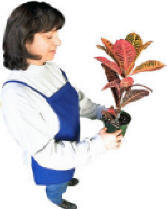
If you desire a certain plant because
of its size and type, you should be aware that they must be
handled, planted, and cared for in the proper way. There are three
types of ornamental plants: those that are called ball and burlap
(B&B), bare root and container grown.
If the plants are container
grown or ball and burlap plants, you must handle with care and
remove the container around the root ball leaving as much soil as
possible around the roots. The pot should be totally removed or the burlap
partially removed.
Bare root plants, which are smaller in size,
are only available in spring and should be planted immediately
after purchase.
• Climatic considerations are very important because the plants
survival is highly dependent on temperature, etc. Carefully check
the plants you are choosing for your landscape and make certain
the climates in your area is suitable.
• Prevent pests. There are plants that can resist certain pests.
Be sure to choose these plants for your landscape especially if
you have identified the pests that are a problem in your area.
Deer are notorious for eating many of our favorite flowering
plants. If they are a problem in your region of the country, there
are garden plants that deer don't particularly care for. They
don't seem to eat Ageratum.
The "spider flower" Cleome, resists deer attacks and is an all
season bloomer. Cosmos is also a good choice. Dianthus, and all of
the salvias resist being eaten. Local garden shops should know
which plants have the best chances of surviving the attacks of
pesky deer.
 • Butterflies. Take care of the butterflies that make the
garden more attractive and decorative. Butterflies are a beautiful
sight to watch when they flit around the garden. It is not only
the beauty they bring, but they pollinate plants, which in turn
helps in restore the cycle of life in the bioscape. • Butterflies. Take care of the butterflies that make the
garden more attractive and decorative. Butterflies are a beautiful
sight to watch when they flit around the garden. It is not only
the beauty they bring, but they pollinate plants, which in turn
helps in restore the cycle of life in the bioscape.
Provide water to moisten the soil. Most butterflies do not drink
from water containers. Instead, they drink from the moisture in
the soil. Look for a variety of plants that will attract different
kinds of butterflies that will beautify and pollinate your
habitat.
• Start healthy.
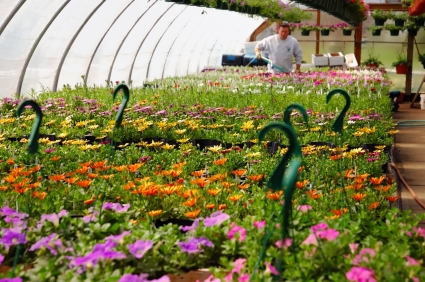
Choose plants from a reputable nursery that you
know have been
properly cared for. Be aware – do not purchase
damaged plants.
|
|
Choosing the right plants for better landscaping
Landscaping has become a common feature not only in big garden
areas, but even in small spaces inside and outside buildings and
homes. Home and building-owners believe that appropriate
landscaping can make a significant difference in every structure’s
appearance.
The term landscaping may sound complicated and technical to
outsiders, but it really is just the art of putting the right
plant in the right place. Landscaping is an ongoing process
because later, what is considered the right plant now may become
the wrong choice due to some factors.
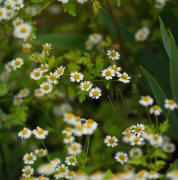 The choice of plants is one of the most important factors in
landscaping because plants can make or break the landscape design.
Plants will give form and color to the landscape. The choice of plants is one of the most important factors in
landscaping because plants can make or break the landscape design.
Plants will give form and color to the landscape.
Before choosing the types or kinds of plants to be used in
landscaping, a landscape designer must first decide the style or
theme of the landscaping project. A creative landscaping artist
can choose from various themes and designs like a small garden
design, a Victorian theme or a garden around a swimming pool
design
What should be considered in choosing plants for landscaping?
Obtaining your plants from a local greenhouse or garden shop is
usually a good, safe source for healthy plants and professional
advice.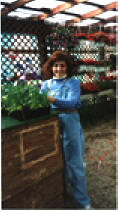
1. The color, size and texture of the plants should be given
consideration as these characteristics will give life to the
landscaping project. A landscape artist must choose plants
depending on the kind of garden being designed.
If it is a small
space, then appropriate plants should be chosen. The purpose of
the landscaping should also be considered in the choice of plants
2. Identify the characteristics of plants that will be used for
the project. An important factor is the size or the height the
plant will reach upon its maturity. The weather and climate needs
of the plant should also be considered, as well as the type of
soil where the plant will grow best.
3. Choose plants that are not attractive to pests. There are
plants that are pest resistant, and if they fit the landscaping
project, then they would be an ideal selection.
4. Estimate the space that the plant will occupy when it is fully
grown. There are plants that grow horizontally and failure to take
this into consideration may pose a problem later.
5. Make sure that the plants you choose for the project have good
color combinations. Choose from colors that will either complement
or contrast with each other. A striking color scheme can make or
ruin a landscaping project. |
Whatever the design or theme of your landscaping project is, make
sure that you choose plants that are easy to take care of,
efficient, and which have high chances of survival.
Using Native Plants in Landscaping
Using native plants in landscaping in an urban setting
exudes a
certain character and at the same time requires fewer resources;
such as water, etc... Here are some things that you should know
when planning to embark on this endeavor.
Why use native plants?
Using native plants for landscaping is a way of celebrating
natural heritage and a way of returning back to a land ethic
established 50 years before by Aldo Leopold. Looking closely at
native plants, it can be ascertained that these plants have many
traits that make them very appealing in terms of aesthetic value,
ecological value, and practicality. They can also present some
health benefits when used properly.
What are
Native Plants
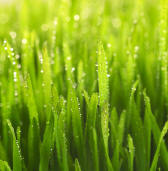 So what are native plants? Native plants are plants that have
evolved naturally in the United States. In particular, native
plants in a certain area are those that were thriving in the
particular area long before humans brought plants from faraway
places. So what are native plants? Native plants are plants that have
evolved naturally in the United States. In particular, native
plants in a certain area are those that were thriving in the
particular area long before humans brought plants from faraway
places.
Both in Central and Eastern North America, the native
plants grow in areas that have other species which have adapted to
similar weather, moisture, and soil conditions.
Some of the more
prevalent types include tallgrass prairies, beech and maple
forests, freshwater marshes, bogs, and savannahs among others. |
Native plants are energy savers
Since native plants have been present in their respective areas
for thousands of years, they have adapted and toughened against
local conditions. They are resilient and can withstand the cruel
winter cold or the sizzling summer heat. After getting a firm hold
on the land, these types of plants will need no fertilizers or
irrigation and are less prone to pests. Because of these reasons,
native plants are very ideal for a low-maintenance type of
landscaping and gardening.
Native plants are fascinating
Due to their diversity, native plants include wonderful flowers
and interesting foliage. Trees and shrubs native to an area present
a multitude of shapes, textures, and sizes to the landscape.
Besides this, native plants have very interesting cultural as well
as historical dimensions. A lot of the species are considered to be
of value both as food and medicine. Some types have been used for
textiles, dyeing, and cordage to name a few of their uses... It also
serves as a reminder, a link to yesterday and its memories. |
Resources –
1. You can make a Dramatic Increase in The Number of Butterflies
That Linger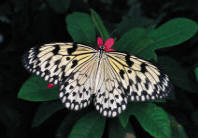 Around Your Beautiful Garden,
Butterflies provide a perfect way to
pollinate other plants. They naturally eat other predators that
might threaten the plants in your garden. Most of all, they are fascinating creatures that can
provide hours of peaceful entertainment and
serenity in a sometimes crazy world! Around Your Beautiful Garden,
Butterflies provide a perfect way to
pollinate other plants. They naturally eat other predators that
might threaten the plants in your garden. Most of all, they are fascinating creatures that can
provide hours of peaceful entertainment and
serenity in a sometimes crazy world!
The inexpensive book,
“How to Attract Butterflies to Your Garden” has been put
together using the tips and tricks offered by the best gardeners in
the business. CLICK HERE for details
2. Selecting Native
Plants
Visit
PlantNative for the basic Concepts of landscaping with
native plants, referred to by many as "naturescaping," It's a free
website where you can quickly and easily find the best Native plants
for your region, and the Nurseries where you can get them.
CLICK
HERE for NATIVEPLANT.com
Share with your
Gardening Friends if you Like This
To Top for Selecting Best
plants tips |
|